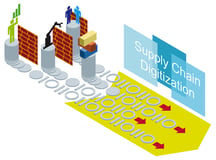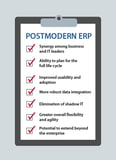The Value of Transport Planning
Nick Ostdick - November 23, 2017

For many of today’s manufacturing companies, operational transport planning is akin to a game of musical chairs. The strategy is often hard to decipher, network players don’t often work synergistically with each other, and the levels of risk or uncertainty continue to grow with each passing round in the game. As a result, it becomes almost impossible to secure a firm footing amongst the other players and thus the executed actions throughout the game become more chaotic, less strategic, and more risky.
Similarly, operational transport planning and its lack of transparency and visibility into the overall supply situation means increases in unnecessary costs and resources, missing or lost parts and deliveries, and more complex logistics that detract from the clarity necessary to leverage lean supply chain management principles. In short, operational transport planning can be a significant stumbling block for manufacturing companies as they work to reduce risk and increase transport and logistics efficiency.
However, in regards to our musical chairs analogy, imagine if you could predict when the music would stop and which chair would be nearest? Imagine you could predict which moves you needed to make to ensure your place in the forthcoming rounds? Imagine you had the insight and visibility to make educated decisions about how to best play the game? With regards to logistics, a transport planning platform allows planners and managers to do just that: To predict, execute, and evaluate transport logistics workflows for the best, most efficient outcomes. Using real-time capabilities, manufacturing companies can create, monitor, and adjust transportation platforms and systems based on customer demand, variances in transport elements such as routing, and other elements associated with moving products from the production floor to the customer’s front door.
With this in mind, let’s examine a handful of value propositions of transport planning to fully understand the benefits manufacturing companies can experience from such a solution in growing, competitive marketplace.
Value proposition #1: The primary task of transport planning is to define the parameters, conditions, and variables of operational transport planning.
Transport planning is perhaps the most effective strategy whereby planners and managers can direct, monitor, and adjust the allocation of part and part families within the value stream to help determine and ensure delivery frequency and reliability. By taking into account a number of critical considerations such as the type of transportation, the delivery route, and frequency with which materials and component parts are collected and distributed. With these conditions accounted for, planners and managers can create systems of classifications and an organizational architecture to ensure planned production programs are successful via on-time, reliable delivery.
Value proposition #2: Transport planning is not simply a one-time operation; rather, such planning is a continuous, cyclical process that needs to be implemented on a frequent basis for optimal results.
Perhaps the biggest misconception about transport planning is that planners and managers only need to address the issue when problems within the supply network occur - and that once the disruption is corrected, there’s no need to review operational transport planning on any kind of regular basis. Yet tactical transport planning needs to be deployed, reviewed, and adjusted on a monthly or even weekly basis for each part and part family to ensure allocated quantities and frequencies still meet the demands of the larger supply situation. As we’ve discussed in previous blog entries, today’s automotive supply network is variant-rich and ever-changing. Production demands shift often when parts are in transit, so the ability to review and adjust a company’s tactical transport planning platform on a continuous basis is key in leveraging the great competitive advantages possible.
Value proposition #3: Without a robust transport planning strategy in place, transportation and supply disruptions or bottlenecks have the potential to occur again on larger and larger scales.
As we discussed a few moments ago, transport planning is not usually carried out regularly or systematically, but only when problems arise. These problem areas are identified and managed, however, little or no oversight is deployed to ensure the same problem doesn’t arise in the future, resulting in wasted costs and resources. Troubleshooting disruptions or bottlenecks on a case-by-case basis is often a very time-consuming process where companies without intelligent demand planning systems often rely on spreadsheets and other manual data entry processes to analyze and correct bottlenecks or disruptions. A robust transport planning strategy that is executed frequently and regularly significantly reduces the time and resources planners must allocate in spot-correcting production and supply issues.
Value proposition #4: Transport planning accounts for a wide range of transportation variables and parameters in helping planners create effective, sustainable transportation platforms.
Based on demand and the best method of transport - LTL, FTL, rail, or other modes - transport planning allows planners to account for the weight, volume, size, orientation, and status of parts or part families to optimize transportation and leverage lean principles in ensuring products arrive on time and in good order. In addition, part lot sizes and placement within containers can also be considered to further ensure the right parts are at the right place at the right time within the value stream. Pre-determined criteria and classifications based on part families help planners achieve greater visibility and transparency into a company’s holistic transportation scheme to make any necessary modifications in service of a more reliable, agile transportation platform.
If you want to learn more get your Guide to Logistics 4.0
In this Guide you will learn:
-
Why a strategic process in transportation planning is a top priority for digitalization
-
What megatrends will increase supply chain volatility
-
How to manage it
LATEST POSTS
- Understand Circular Economy in The Manufacturing Industry
- How Can Industry 4.0 IT Integration Be Achieved Smoothly?
- The Significance of Order Sequencing in Discrete Manufacturing
- How to improve your Supply Chain Management: The Power of Control Towers
- Optimizing Human Resource Scheduling in Manufacturing: A Technological Approach



